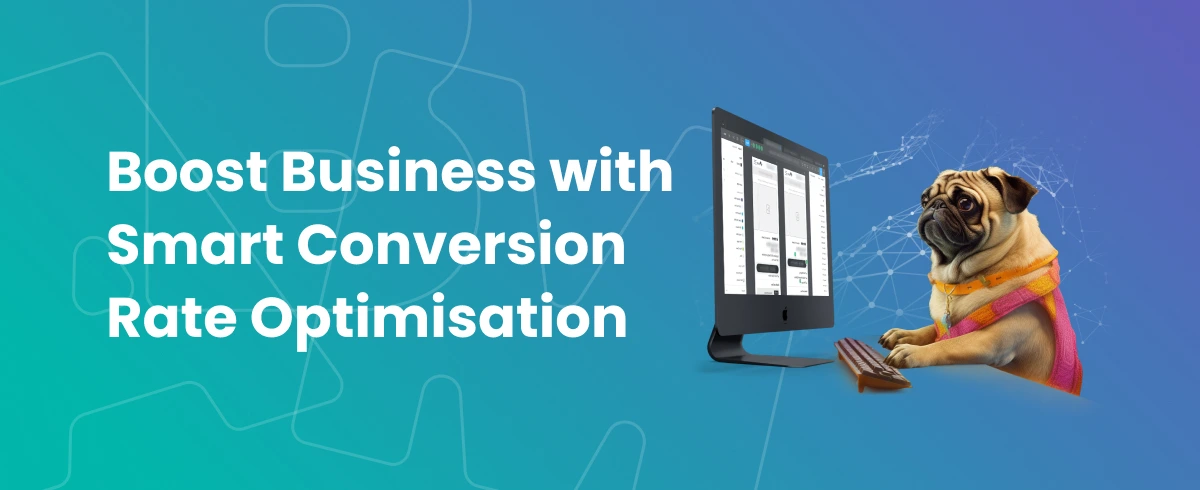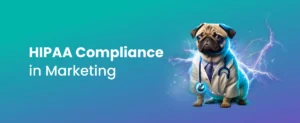I’ve spent years in the digital marketing trenches, witnessing firsthand how businesses attract and, more importantly, convert leads. One thing’s clear: A robust understanding of conversion rate optimisation is no longer optional; it’s absolutely crucial for success in the current digital climate.
You can have the most beautiful website in the world, the most captivating content, but without a strategic approach to conversion rate optimisation, your efforts might fall flat.
The Relevancy Revolution: Tailoring the User Experience
In Account-Based Marketing (ABM), personalisation is a game-changer. However, it often feels like a daunting process for newcomers. Many associate personalisation solely with highly-targeted, one-to-one interactions, which can be resource-intensive, especially for smaller teams.
However, effective personalisation doesn’t always require an elaborate, highly specific approach. Often, it’s the subtle touches and seemingly obvious tweaks that yield substantial results in conversion rate optimisation. It’s about understanding your audience segments, their average conversion rate, their needs and challenges, and reflecting this understanding in how you communicate with them.
Start Simple: Symmetric Messaging
A great starting point is aligning your advertising message with what visitors see on your landing pages, known as symmetric messaging. It’s about maintaining a cohesive narrative that resonates with the user’s initial intent. Imagine clicking on an ad highlighting a specific solution for CMOs, only to land on a generic homepage.
It creates friction in the user journey, potentially leading to drop-offs. This principle also extends to how we address various stages of the buyer’s journey. For someone just discovering our brand, hitting them with a hard sell right off the bat isn’t likely to be effective.
Instead, focus on nurturing them with valuable content tailored to their initial level of awareness, gradually moving them towards conversion as their trust and confidence build. This staged approach to conversion rate optimisation recognises that the user journey is rarely linear and each interaction plays a role in shaping their final decision.
Micro Goals, Macro Impact
Breaking down larger conversion goals into smaller, trackable ‘micro-goals’ offers a structured framework for optimising the user journey. By identifying those critical touchpoints and understanding user behaviour at each stage, we can make incremental improvements that contribute to the bigger picture.
For example, a key micro-goal might be getting a visitor to download a valuable resource in exchange for their email address, turning them from an anonymous website visitor into a qualified lead.
Personalisation: The Power of Subtlety
Personalisation doesn’t always have to involve addressing users by name. In many instances, a more nuanced approach yields better results. Recognising a visitor’s industry, highlighting case studies that resonate with their specific challenges, and tailoring the messaging to reflect their unique pain points can create a sense of tailored relevance, fostering trust and encouraging them to explore our solutions.
That said, it’s crucial to avoid going overboard. Striking the right balance between helpful personalisation and coming across as intrusive is key to increasing conversion. A delicate touch that demonstrates you understand their needs without feeling overly familiar often yields the best CRO outcomes.
The Importance of A/B Testing for Conversion Rate Optimisation
A/B testing plays a pivotal role in optimising for conversions within an ABM program. Instead of relying on gut feeling, A/B testing lets us test different messaging and creative elements, helping us determine what truly resonates with our target audience and leads to the most desired actions. This data-driven approach eliminates guesswork, replacing it with evidence-based insights that guide our conversion rate optimisation strategy.
A/B testing offers valuable data on what works and what doesn’t when you want to convert website visitors. This data can inform your CRO strategy and help your business grow. You can discover how to encourage conversions by making changes to your website based on data, leading to increased revenue.
Using CRO for Best Impact
In the end, successful conversion rate optimisation isn’t about tricks or shortcuts. It’s about a deep customer understanding, aligning marketing messages, respecting the user journey, and leveraging data-driven insights to refine our approach constantly. When done well, it becomes an organic extension of how we connect with our audience, guiding them seamlessly from initial awareness to confident advocates of our brand.
FAQ
Conversion Rate Optimisation (CRO) is the process of improving your website or landing pages to increase the percentage of visitors who take a desired action, such as making a purchase, filling out a form, or subscribing to a newsletter.
Symmetric messaging ensures that the message users see in your ads or links is consistent with what they encounter on the landing page. This alignment reduces friction and confusion, leading to a smoother user experience and higher conversion rates.
Personalisation tailors the user experience to individual preferences and needs, making your messaging more relevant and engaging. When done correctly, it can significantly increase the likelihood of conversion by addressing the specific challenges and interests of different audience segments.
A/B testing involves comparing two versions of a webpage or element to determine which performs better in terms of conversions. This data-driven approach eliminates guesswork, allowing you to make informed decisions that can lead to substantial improvements in conversion rates.
Micro-goals are smaller, actionable steps that guide users through the conversion funnel, such as signing up for a newsletter or downloading a resource. By focusing on these incremental goals, you can optimise each stage of the user journey, ultimately leading to higher overall conversions.





















